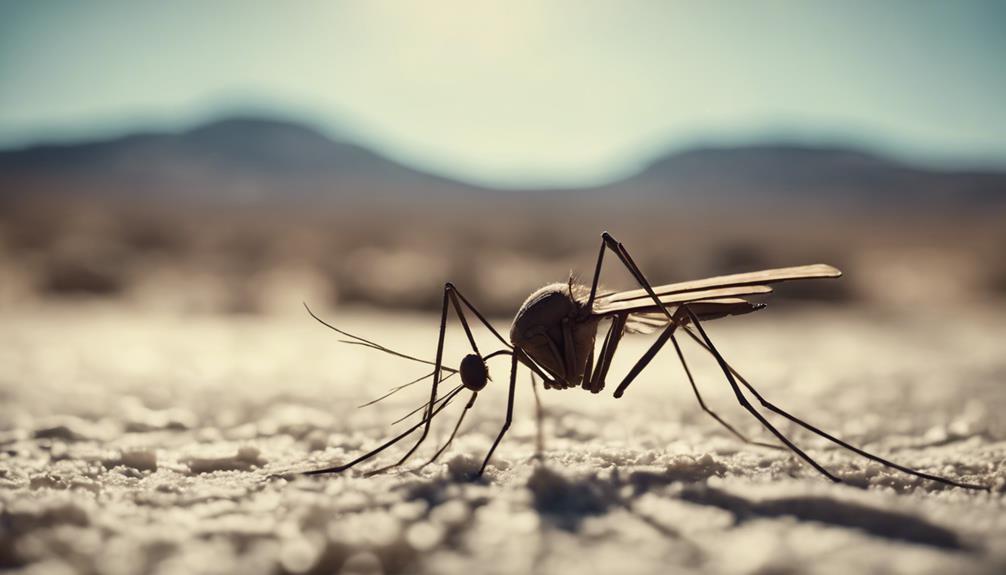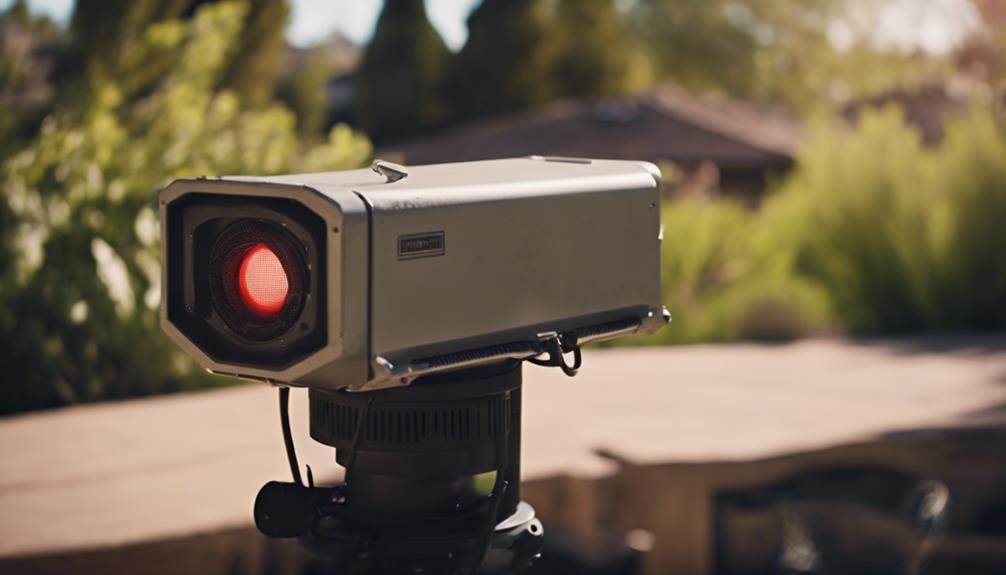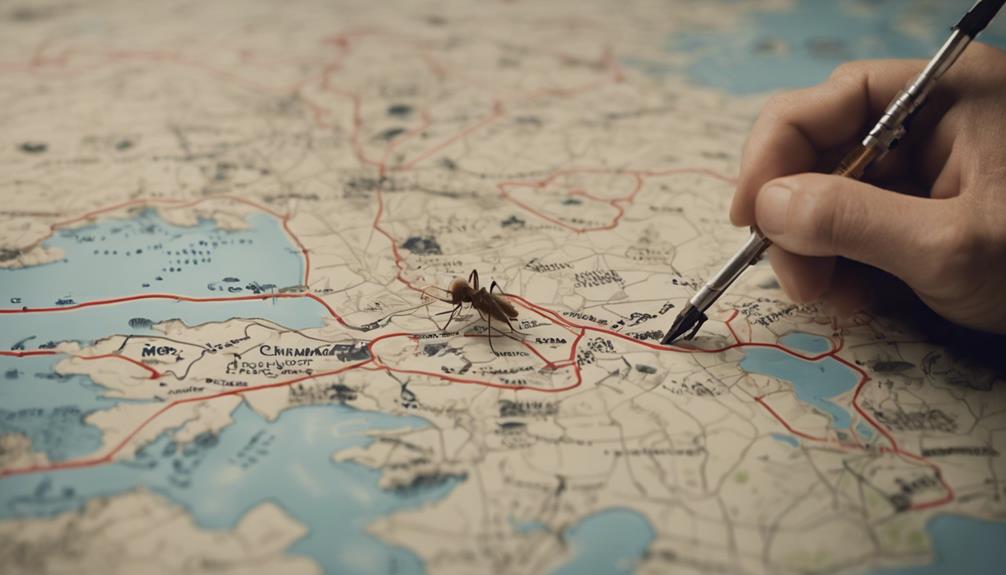Climate change in Utah is expanding mosquito habitats due to increasing temperatures. This shift prompts mosquitoes to move to higher altitudes, creating favorable breeding conditions with more precipitation and warmth. Mosquito populations are greatly affected by these climate trends. To manage this, proactive surveillance and control are essential. Rising temperatures heighten the risk of mosquito-borne diseases like West Nile virus and Zika virus in Utah. Effective control measures and public health interventions are critical to combat these risks. Surveillance of mosquito populations, like Culex tarsalis and Culex pipiens, is essential. Learn more about strategies for mosquito control in changing climates and public health measures against mosquito-related risks.
Key Takeaways
- Increasing temperatures expand mosquito habitats in higher altitudes.
- Climate change drives mosquito populations into new areas.
- Favorable environments for mosquito breeding created by changing climate conditions.
- Rising temperatures increase risk of mosquito-borne diseases in Utah.
- Mosquito migration due to climate change expands disease reach.
Mosquito Habitats and Climate Change Trends
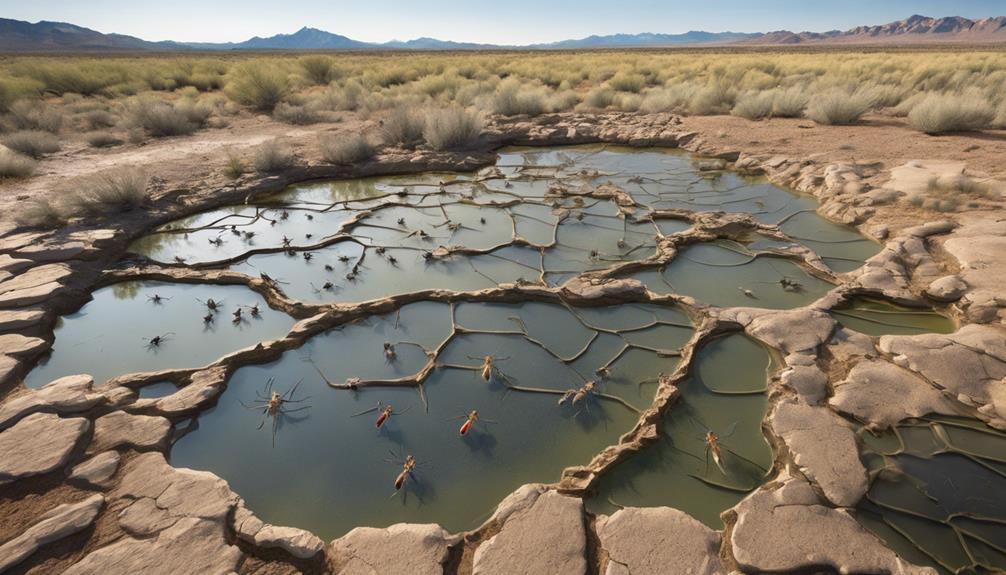
The increasing temperatures in Utah are actively expanding mosquito habitats into higher altitudes. Climate change is the driving force behind this expansion, prompting mosquito populations to move into new areas previously unaffected. The changing climate conditions, characterized by increased precipitation and warmer temperatures, are creating more favorable environments for mosquito breeding and survival at higher elevations.
As a result of these trends, the distribution and behavior of mosquitoes in Utah are being greatly influenced. Mosquitoes are adapting to these changing conditions by seeking out new habitats that were once considered unsuitable. This shift underscores the need for proactive surveillance and control measures to manage the growing mosquito populations effectively.
Understanding the link between climate change and the expansion of mosquito habitats is vital in mitigating potential risks associated with mosquito-borne diseases. By closely monitoring these changes and implementing targeted interventions, authorities can better protect communities from the threats posed by these shifting mosquito populations.
Impact of Climate Shifts on Mosquito-Borne Diseases
With rising temperatures shifting ecosystems, the impact of climate shifts on mosquito-borne diseases in Utah is increasingly concerning. Here’s how climate change is influencing the landscape of mosquito-borne diseases in the region:
- Increased Risk of Mosquito-Borne Diseases: As temperatures rise, mosquitoes are migrating to higher altitudes in Utah, bringing with them diseases like West Nile virus and Zika virus. This movement expands the geographical reach of these illnesses, posing a greater threat to public health.
- Expansion of Mosquito Populations: Climate change is creating more favorable conditions for mosquito breeding, leading to an increase in mosquito populations across Utah. This rise in numbers enhances the likelihood of disease transmission and outbreaks.
- Necessity for Control Measures: The growing impact of climate shifts on mosquito-borne diseases underscores the critical need for effective control measures and public health interventions. Implementing strategies to monitor and manage mosquito populations is essential to mitigate the risks associated with these diseases.
Monitoring Mosquito Populations in Utah
Monitoring mosquito populations in Utah involves tracking specific species like Culex tarsalis in wetland areas and Culex pipiens in urban regions to assess their distribution and abundance. This monitoring is essential due to the impact of climate change on mosquito populations. With temperature increases, mosquitoes like Culex tarsalis in wetland environments and Culex pipiens in urban settings are adapting their behaviors.
The rise in positive mosquito pools, including a significant increase to 301 cases last year in Utah, highlights the urgency of monitoring these populations. Additionally, the accelerated virus growth in temperatures around 70 degrees Fahrenheit emphasizes the need for effective control strategies.
Strategies for Mosquito Control in Changing Climate
Amidst the shifting climate conditions affecting mosquito populations in Utah, implementing targeted control strategies is paramount to mitigating the risks posed by species like Culex tarsalis and Culex pipiens. To effectively combat the challenges presented by climate change and its impact on mosquito abundance, consider the following strategies:
- Microbial Spraying: Utilizing microbial agents can be an effective method to control mosquito populations. These agents specifically target mosquito larvae, reducing adult mosquito numbers without harming other organisms in the ecosystem.
- Temperature Effects: Understanding how temperature influences mosquito life cycles is essential. Warmer temperatures can accelerate the development of mosquitoes, leading to increased populations. Adjusting control strategies based on temperature variations can be key to successful mosquito management.
- Watering Reduction: Given that reduced watering during droughts has been linked to decreased Culex pipiens numbers, implementing watering reduction strategies in urban areas can help control mosquito populations. Conserving water not only aids in water sustainability but also contributes to mosquito control efforts in changing climates.
Public Health Measures Against Mosquito-Related Risks
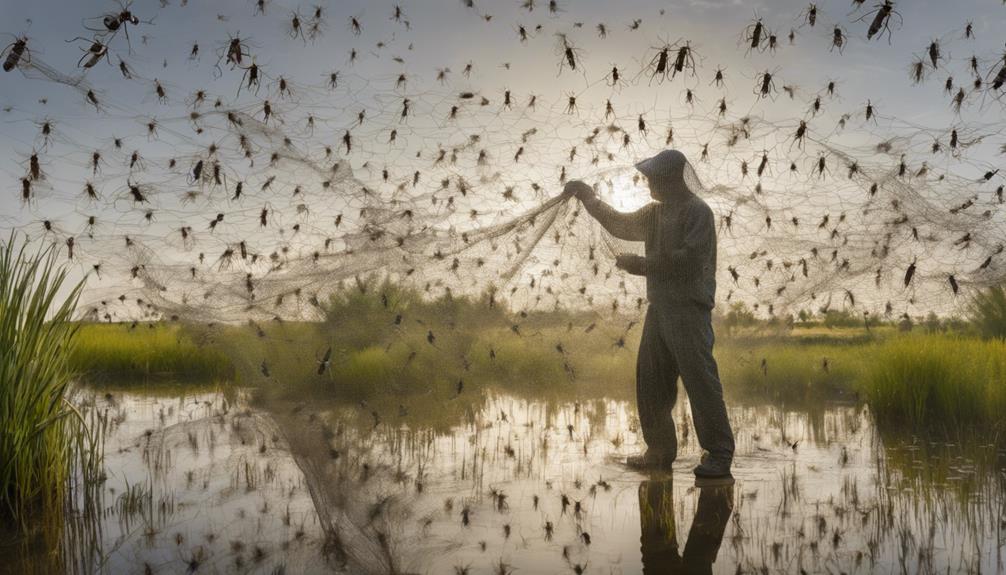
In the context of combating mosquito-borne diseases in Utah, addressing public health measures to mitigate related risks is essential. With the increasing impact of climate change on mosquito populations, particularly Culex mosquitoes known for transmitting diseases like the West Nile virus, proactive steps are necessary for disease prevention.
Public health recommendations emphasize protective measures such as wearing long-sleeved clothing, using mosquito repellents, and minimizing outdoor activities during peak mosquito activity periods at dawn and dusk. In Utah, mosquito monitoring programs are critical in targeting high-risk areas and species, like Culex tarsalis in wetlands and Culex pipiens in urban settings, to track and manage mosquito populations effectively.
Intensified efforts in mosquito control, including extended spraying periods due to warmer temperatures accelerating virus growth, showcase the state’s commitment to combating mosquito-related risks. Moreover, public health interventions and community engagement play essential roles in raising awareness, implementing preventive measures, and ultimately reducing the transmission of mosquito-borne viruses in Utah.
Frequently Asked Questions
Why Are Mosquitoes so Bad This Year in Utah?
Mosquito populations surged due to warm weather accelerating virus growth, creating more breeding grounds. Combat with insect repellent, avoid standing water, and cover up during outdoor activities. Control pests for public health during mosquito season.
Are Mosquitoes Affected by Climate Change?
Mosquito populations in Utah are influenced by temperature fluctuations, altering their breeding habits. Climate change impacts species diversity, survival rates, and the spread of mosquito-borne illnesses. Understanding these effects is important for developing adaptation strategies to protect public health.
How Is Utah Being Affected by Climate Change?
How is Utah being affected by climate change? Rising temperatures are causing water scarcity, increasing wildfires, and worsening drought conditions. Agriculture is impacted, air quality suffers, and urban heat islands form. Ecosystem disruptions, extreme weather, and health risks rise.
Do Mosquitoes in Utah Carry Disease?
To prevent mosquito-borne diseases in Utah, wear long sleeves, use repellents, and avoid standing water. Public health efforts, like monitoring and controlling mosquito populations, help reduce disease transmission. Your actions and community outreach can make a difference.

